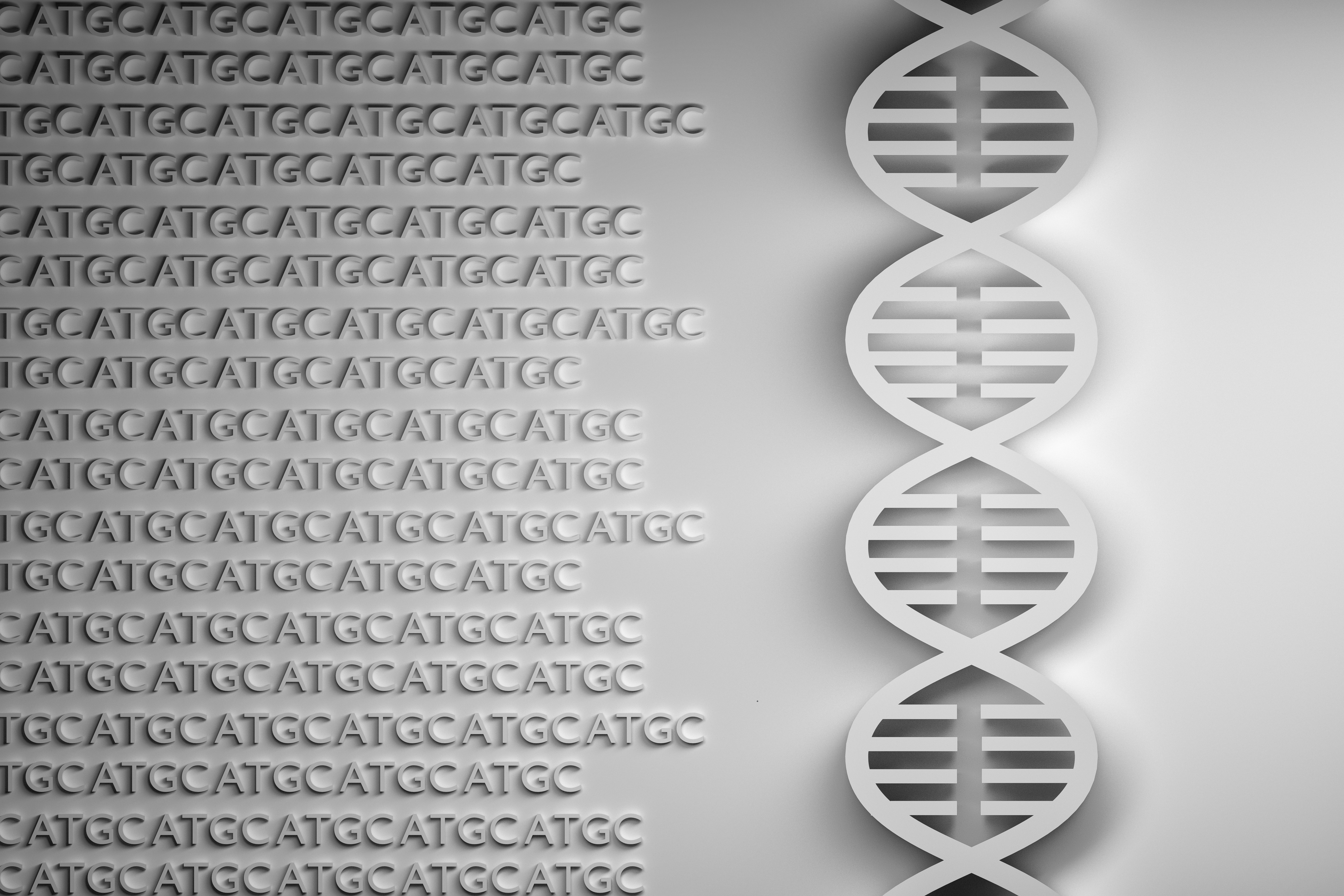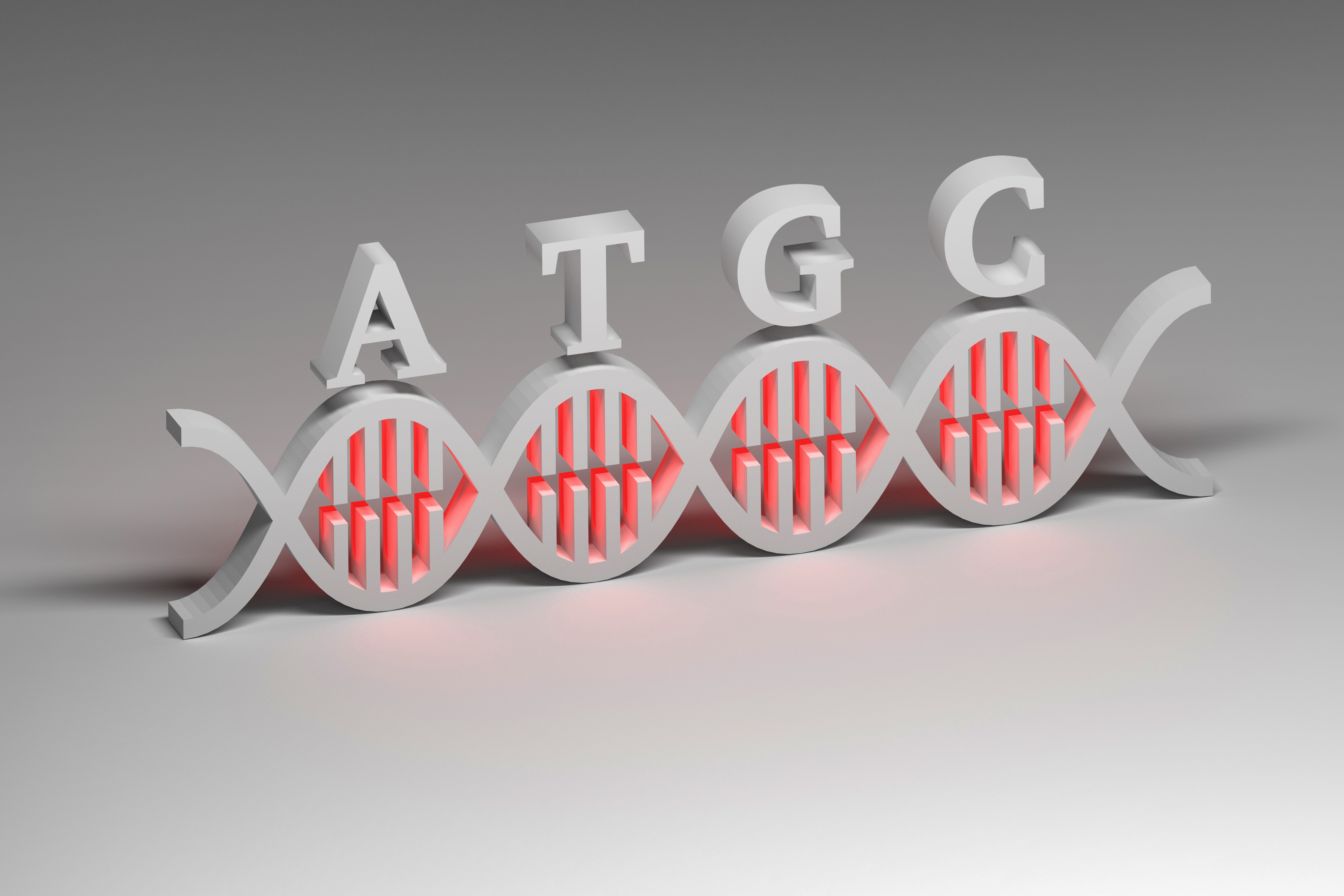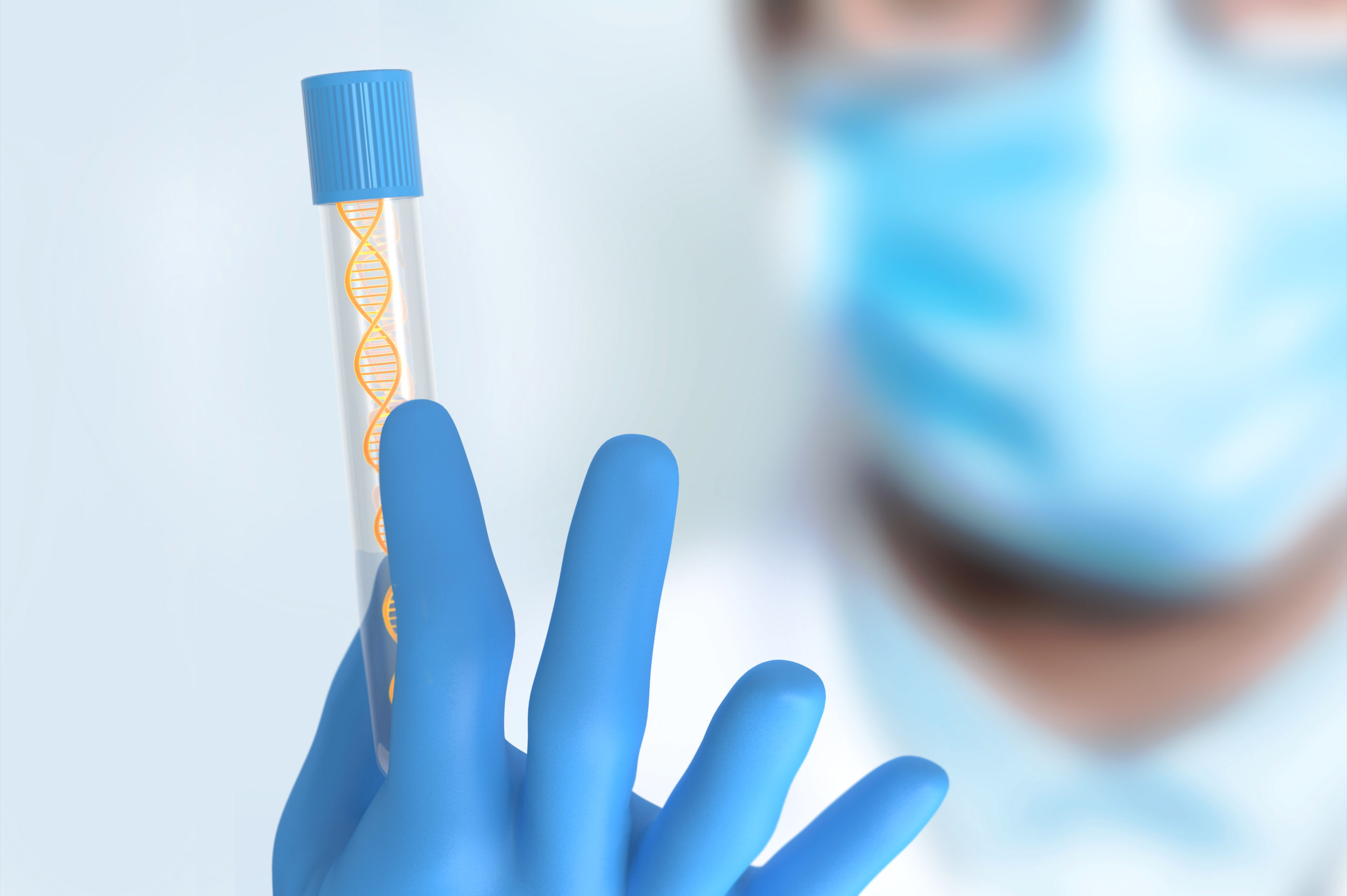What is DNA?
Cells are the basic structural and functional units of every living organism, including our body. Every cell in our body has a different function and contains deoxyribonucleic acid or DNA. DNA is a sequence of chemical units, the amino bases, called adenine (A), thymine (T), guanine (G), and cytosine (C). DNA bases pair with each other, A with T and G with C, to form the base pairs. Each base is attached to a sugar molecule and a phosphate molecule, forming a nucleotide. Nucleotides are arranged in two long strands that form the double helix of DNA.

What is a gene?
In cells, the human genome is packed into larger units, the chromosomes. Every person has two copies of chromosomes, each inherited from each parent. Each chromosome contains many genes. Genes are small sections of the long strand of DNA, with a specific unique sequence, in the size of some hundred to millions of DNA bases, in humans. According to the Human Genome Project, humans are estimated to have 20.000 to 25.000 genes. Most genes are the same in all people, but a couple of them are slightly different. Alleles are forms of the same gene with small differences in their sequences, responsible for each person’s different and unique characteristics.

What is a genetic variant?
The changes within the sequence of DNA in human genes are called genetic variation. Mutations and polymorphisms are types of genetic variation. Mutations are relatively rare, while polymorphisms are more frequent. Single Nucleotide Polymorphisms (SNPs) are variations that occur when just one nucleotide is altered along with the billion base pairs of DNA sequence. A person can carry millions of them. Some genetic variations may cause or modify a disease risk, but some other changes may lead to no increased risk or a neutral presentation regarding a specific characteristic.
What is a genetic test?
New technologies are enabling faster and accurate detection of genetic variants. Genetic testing involves examining biological samples (blood, saliva, urine, tissues, etc.) to determine the existence of a change in DNA. They are useful in determining whether an individual has a specific condition or may develop one in the future. That information is beneficial for the diagnosis, treatment, or prevention of several health problems.

How is a molecular diagnostic genetic test performed?
New technologies allow direct DNA analysis when the gene sequence of interest is known. A DNA test can be performed on any biological sample and requires a small amount of sample. Several different molecular technologies can be used, such as direct sequencing, comparative genomic hybridization, DNA microarray, protein microarray, and Polymerase Chain Reaction (PCR), which is the one we use. PCR is the most typical procedure used to amplify targeted sections of DNA through repeated cycles of denaturation (heat-induced separation of double-stranded DNA), annealing (binding the specific primers of the targeted section to parent DNA strand), and elongation (extension of the primer sequence to form a new copy of the target sequence). The amplified product can further be tested.
What is Pharmacogenomics?
Pharmacogenomics describes the different drug responses and outcomes in patients who are treated with the same drug. Pharmacogenomics aims to maximize the therapeutic effects, minimizing the risk of adverse reactions with tailored drug treatments depending on a person’s genetic background, referred to as personalized medicine. The genes can be the key to prescribing the best available drug therapy from the beginning instead of relying on the trial-end-error method for matching patients with the proper drugs. What’s also very interesting is that pharmacogenomics has the potential to reduce the healthcare costs associated with hospitalizations due to adverse drug reactions and multiple drug prescriptions.
